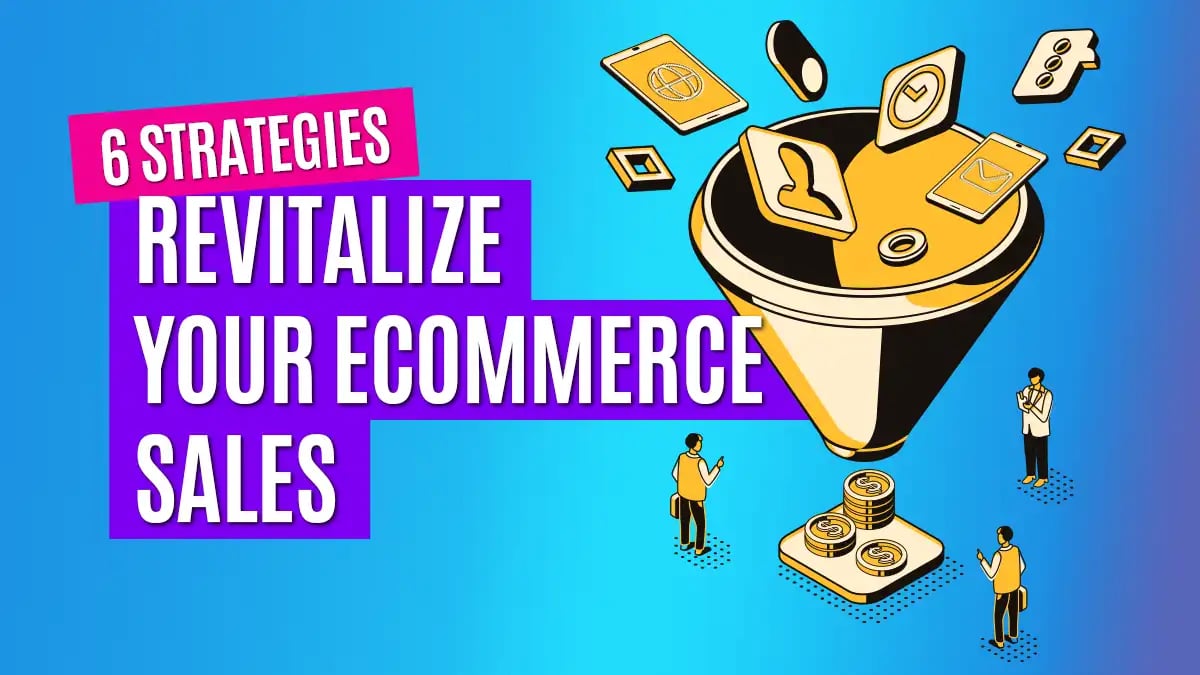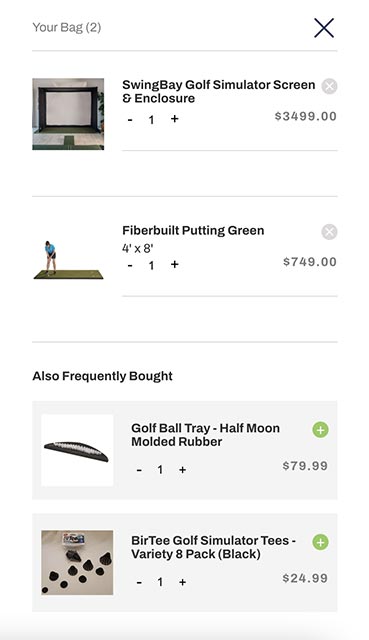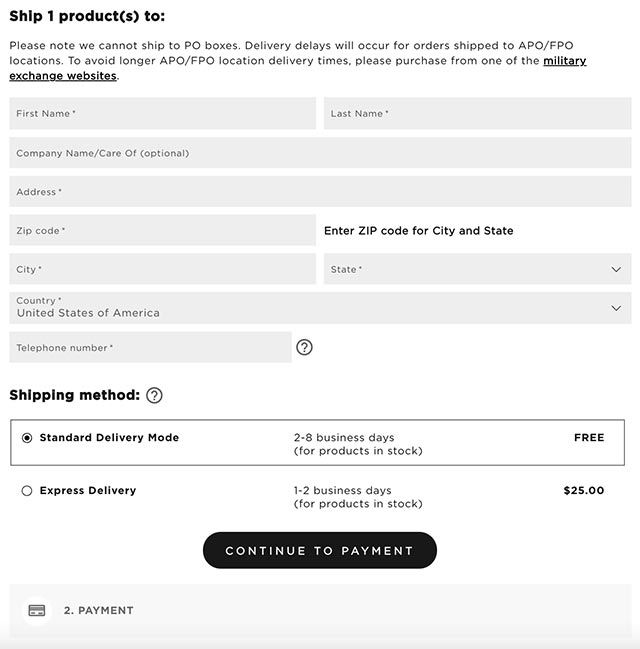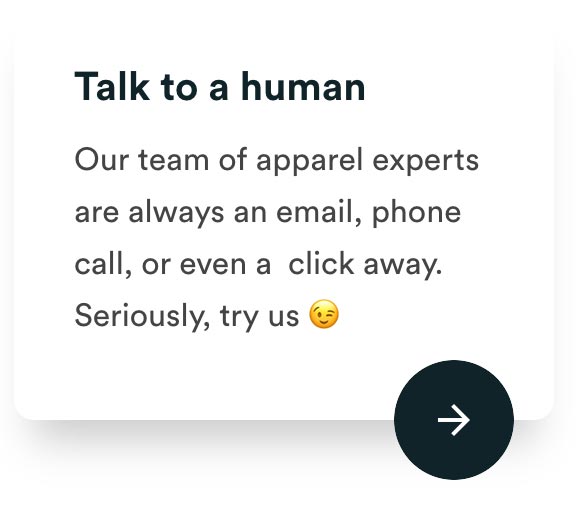
Most entrepreneurs looking to grow a profitable business aren't satisfied with below-average ecommerce sales. Many even feel that average conversion rates (scoring at 1.81% in September 2021) aren't enough to drive real success. And sure, sales can't be through the roof all the time. After all, some seasonal lulls in consumer interest are natural. But, if you're seeing fewer purchases lately, it might be time to pay a bit more attention to the effectiveness of your brand at acquiring new customers.
Whether you feel like your online store isn't delivering the results you're used to or want to boost business with some clever tweaks, the following are the six best strategies to revitalize your ecommerce sales.

1. Segment your email list more accurately
One of the most impactful things you can do to boost ecommerce sales is targeting the right people. And what better way to deliver relevant messages to your audience than to invest in email marketing? After all, being a strategy with the highest potential ROI (an average of $36 per $1 spent, according to Litmus), email is well worth investing in.
But, to ensure that your email marketing efforts deliver results, you will need to spend some time fine-tuning your lists. That's why you'll want to do some accurate segmentation.
Using information such as customer location, interests, or even signup date can help you optimize the messages you send to deliver the best results.
According to a 2017 study by MailChimp, segmented email campaigns performed 14.31% better than unsegmented ones in terms of open rates and an impressive 100.95% better in terms of clicks.
So why not upgrade your existing email marketing campaigns? Using information such as customer location, interests, or even signup date can help you optimize the messages you send to deliver the best results. And, perhaps more importantly, they can play a part in automating your email campaigns, ensuring that you get a higher ROI without the additional work.
2. Implement a referral program
You probably already use some form of social proof to boost ecommerce sales. You might be working with influencers, displaying testimonials on your product pages, or simply using trust icons on your homepage. But the one way you could see even better results is to implement a referral program in your store.
One way you could see even better results is to implement a referral program in your store.
You see, data shows that referred customers spend 13.2% more, are 18% more loyal, and have a 16% higher lifetime value. So, it would be foolish not to add a referral program to your ecommerce site, especially knowing that as many as 83% of consumers trust recommendations from friends and take action on their opinions.
The best way to do a referral program on your site is to make it double-sided. That is, you should aim to reward both your existing and your potential customers. A great example of how you can do this is to include a landing page on your website, like the one below by Future Kind.
 |
| Image source: futurekind.com |
This brand's strategy is to invite happy customers to spread the word about their products, offering a $20 coupon. But, to make the offer even more lucrative, it also gives $20 to new customers, encouraging people to spread the word about Future Kind's products and offering them a gift they are sure to appreciate.
3. Sell complementary products
If you feel like the number of your ecommerce sales is satisfactory, but you wish you could still do something to boost performance, perhaps it's not a bad idea to find ways to increase your average order value.
Upgrading your existing cross-selling efforts with more relevant products, you can significantly improve the entire customer experience.
By expanding your inventory with products that complement each other and utilizing cross-selling on your site, you can effectively encourage web visitors to spend more. And the best part is, by upgrading your existing cross-selling efforts with more relevant products, you can significantly improve the entire customer experience. That in itself can ensure that the people who buy from you keep coming back and bring a steady revenue to your business.
For some great examples of cross-selling, check out the Also frequently bought widget by Rain or Shine Golf, which uses insights and historical sales to present web visitors with products they may enjoy in addition to their current selection.
 |
| Image source: rainorshinegolf.com |
Or, if that doesn't sound like the right solution for you, check out the You may also like one from NARS. This strategy relies on tagging products from the same lines and using these tags to boost AOV.
 |
| Image source: narscosmetics.com |
4. Simplify the checkout process
If you're seeing a good amount of website traffic and a satisfactory clickthrough rate on your pages but are still not getting enough sales, it might be time to check your cart abandonment rates.
According to the Baymard Institute, 69.80% of consumers add items to their cart without going through with the purchase. And, in 18% of cases, the reason for such consumer behavior is that the checkout process takes too long or is too complicated. So, if you're willing to make some UX upgrades to your site, you may find yourself successfully lowering cart abandonment rates and, consequently, increasing sales in your ecommerce store.
The reason for such consumer behavior is that the checkout process takes too long or is too complicated.
One easy way to simplify the checkout process is to allow for guest checkout.
Allowing new customers to get their hands on a product quickly, without forcing them to register for an account or sign up for a newsletter is a great way to lower the amount of risk associated with buying from your store. And, granted that you provide an exceptional customer experience, these people are highly likely to return to you the next time they want to make a similar purchase.
For example, Bose relies entirely on guest checkout for its ecommerce store, knowing that the interval at which people buy expensive home theater speakers isn't high enough to justify creating a user account.
 |
| Image source: bose.com |
So, it only asks for the most essential information about consumers. It even points out that contact information is required strictly for updates about shipping. The result is a minimally intrusive and quick checkout process that, doubtlessly, leaves a positive impression on anyone buying from this brand.
Most people prefer to skip the check-out process of typing in their address and contact info on checkout pages.
However, you may feel like guest checkout doesn't do enough to quicken up the buying process. Especially if you're selling items at a lower price, are targeting consumers making impulse purchases, or are simply new in the business and want to encourage as many people to become your customers as possible.
In these cases, you might also want to consider express payment solutions offered by third-party service providers.
This is precisely what Homestead Supplier does on its website. This retailer understood that most people prefer to skip the process of typing in their address and contact info on checkout pages. So, it decided to allow customers to make payments through secure services like PayPal and Google Pay, which take care of everything with a single press of a button and fingerprint or face ID authorization.
 |
| Image source: homesteadsupplier.com |
5. Be available to support your customers in real-time
Did you know that 90% of consumers see customer support as a factor when deciding what brands to support and be loyal to?
That's right. To win customers over, you have to be there for them at all stages of the buyer's journey. And while email, phone, and even social media networks play roles in delivering continuous support to consumers, nothing beats real-time communication that's preferably available 24/7.
That's where live chat comes in. According to a report by HubSpot, two-thirds of people expect brands to reply to them within 10 minutes of reaching out. Additionally, we know that:
- 42% of consumers want to use live chat for support
- 33% for sales questions
- 20% for marketing communication
With these stats in mind, it's only logical that you should add this type of functionality to your site.
However, you have to understand that 24/7 customer support being available isn't enough, in itself, to make a considerable change to your ecommerce sales. To truly reap the benefits of having an always-on support team, you need to make a big deal out of people having the option to reach you instantly.
One easy way to do this is to include banners on your homepage, as done by Zappos.
 |
| Image source: zappos.com |
Nonetheless, there are more proactive ways to show website visitors that you're there for them.
Real Thread, for instance, doesn't just have a chat launch trigger on all of its pages. But, even more, it makes 24/7 support part of its unique value proposition, showing just how committed it is to ensuring a pleasant purchasing experience to anyone who decides to use its services.
|
|
| Image source: realthread.com |
6. Optimize for mobile
Finally, if you're looking to revitalize your ecommerce sales, it might not be a bad idea to improve how you meet consumer needs.
For example, in 2021, 72.9% of retail ecommerce is expected to be generated via mobile devices. So it's only logical that you should make sure that your online store looks just as well on mobile as it does on desktop –like the Penny Skateboards site.
|
|
| Image source: pennyskateboards.com |
Remember that visual design is not everything. Sure, it may contribute to consumer purchasing decisions, but UX will play a much more impactful role.
To effectively boost sales on mobile, make sure that your site is:
- Easy to navigate
- The images and videos you use are optimized for smaller screens
- That it loads quickly even without a wireless internet connection
- The checkout process is intuitive.
In other words, don't hesitate to reevaluate your web design and, if needed, do a complete overhaul to better meet consumer needs and habits.
Over to You
Building an ecommerce business that can stand the test of time is not a set-and-forget kind of job. It requires constantly measuring performance and implementing tweaks and strategies to stay on top of the constantly changing consumer behavior trends.
So, if you've decided to strengthen your store and boost your chances of making a profit in 2021, try implementing these six strategies. They'll not only upgrade your current marketing and sales efforts, but even more, they may just as well play a key part in revitalizing your ecommerce sales.
Related articles:
The 8 Most Important Marketing Metrics for Your Business (And How to Improve Them)
Ecommerce Website Planning And Building - The Basics You Need To Know
How to Write an e-Commerce Product Description?



